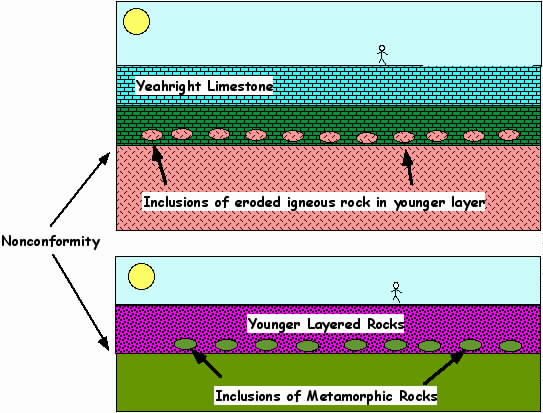
Notice that in the last two examples, the igneous or the metamorphic must have been exposed at the surface of the earth in order for them to be included in the overlying sedimentary rocks. Yet both of these types of rocks form deep within the Earth. To bring them to the surface, the area was uplifted and the rocks overlying the granite or schist were eroded before the sandstone was ever deposited.
Thus the surface between the sandstone and the underlying rock is once again a surface of erosion, or an unconformity. This unconformity is called a nonconformity because the erosional surface places surface rocks against rocks that formed deep beneath the surface.
